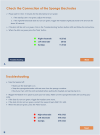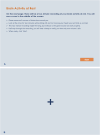A home-based self-directed EEG neurofeedback intervention for people with chronic neuropathic pain following spinal cord injury (the StoPain Trial): description of the intervention
- PMID: 39266672
- PMCID: PMC11549037
- DOI: 10.1038/s41393-024-01031-3
A home-based self-directed EEG neurofeedback intervention for people with chronic neuropathic pain following spinal cord injury (the StoPain Trial): description of the intervention
Abstract
Study design: Randomised controlled trial.
Objectives: The objective is to describe an electroencephalography (EEG) neurofeedback intervention that will be provided in a randomised controlled trial for people with neuropathic pain following spinal cord injury (SCI): the StoPain Trial. In this trial, participants in the treatment group will implement an EEG neurofeedback system as an analgesic intervention at home, while participants in the control group will continue with the treatments available to them in the community.
Setting: University-based study in Sydney, Australia.
Methods/results: This manuscript describes the rationale and components of the EEG neurofeedback intervention designed for individuals with SCI neuropathic pain and intended for home-based implementation. Our report is based on the criteria of the Template for Intervention Description and Replication (TIDieR) checklist, and includes why the efficacy of EEG neurofeedback will be investigated, what will be provided, who will administer it, and how, where, when, and how much the EEG neurofeedback intervention will be administered.
Conclusions: This manuscript provides a detailed description of a complex intervention used in a randomised controlled trial. This description will facilitate the subsequent interpretation of the trial results and allow for the replication of the intervention in clinical practice and future trials.
Sponsorship: Australian Government Medical Research Future Fund (2020 Rare Cancers Rare Diseases and Unmet Needs Scheme: 2006020).
© 2024. The Author(s).
Conflict of interest statement
GLM is the non-paid CEO of the non-profit Pain Revolution. He has received speaker fees for lectures on pain, pain education, and rehabilitation. He also receives royalties for books on pain and pain education. Professional and scientific bodies have reimbursed him for travel costs related to presentations at scientific conferences and symposia. The other authors declare no competing interests.
Figures





References
-
- Gruener H, Zeilig G, Gaidukov E, Rachamim-Katz O, Ringler E, Blumen N, et al. Biomarkers for predicting central neuropathic pain occurrence and severity after spinal cord injury: results of a long-term longitudinal study. Pain. 2020;161:545–56. - PubMed
-
- Burke D, Fullen BM, Stokes D, Lennon O. Neuropathic pain prevalence following spinal cord injury: a systematic review and meta‐analysis. Eur J Pain. 2017;21:29–44. - PubMed
-
- Widerström-Noga EG, Felipe-Cuervo E, Yezierski RP. Chronic pain after spinal injury: interference with sleep and daily activities. Arch Phys Med Rehabil. 2001;82:1571–7. - PubMed
-
- Putzke JD, Richards JS, Hicken BL, DeVivo MJ. Interference due to pain following spinal cord injury: important predictors and impact on quality of life. Pain. 2002;100:231–42. - PubMed
Publication types
MeSH terms
Grants and funding
LinkOut - more resources
Full Text Sources
Medical

